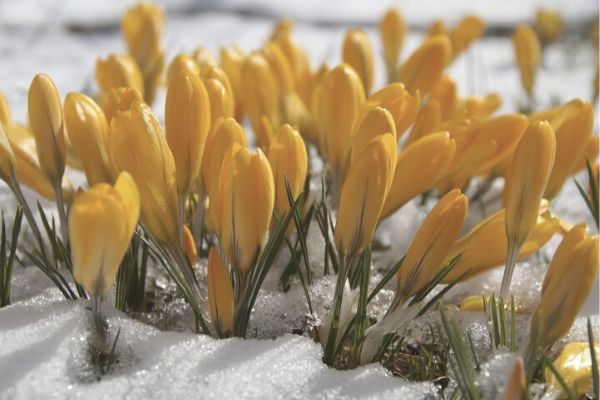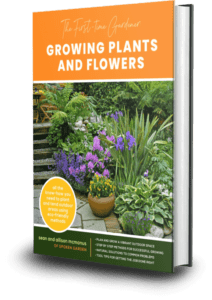How does cold-hardiness affect your spring gardening plan and what the heck does it mean? Listen to this quick podcast to learn more.
Subscribe on iTunes Stitcher Spotify

Today’s Topic:
Cold-Hardiness
In this podcast, you’ll learn why it’s important for you to have a basic understanding of cold-hardiness as it relates to your growing zone. It can greatly affect your garden design plans so you don’t want to miss out on this week’s DIY Garden Minute podcast.
What You’ll Learn:
- Basic explanation of what cold-hardiness is and why it’s important to understand.
- Its importance to gardening and proper plant care.
- Resources and links for more information.
Resources:
Some of the resources and products below may be affiliate links, meaning we might get paid a commission (at no extra cost to you) if you use that link to make a purchase.
- USDA hardiness zone
- How to Plant Your Garden Bulbs (eBook)
- International Hardiness Zones in DIY 134
- Stop Hand Digging in Your Garden (And Use This Bulb Auger Instead)
- Book: American Horticultural Society reference book
- Book: Royal Horticultural Society reference book
- How to Take a Garden Inventory – DIY Garden Minute Ep. 130
What is Cold Hardiness?
Cold Hardiness might make you think of winter, low temperatures, snow, or general plant health, amongst other things. But what does it mean?
This is a plants ability to survive and grow under specific temperatures in specific garden areas or regions.
It speaks to what is the lowest temperature any plant can tolerate and survive at. This is usually given in a range of degrees, Fahrenheit or Celsius. Cold Hardiness is sometimes also referred to as “plant hardiness”.
Examples of plants and their cold hardiness are:
- Daffodils bulbs, themselves, are generally cold hardy from –40 to –35 degrees F (USDA zones 3-9),
- Primroses are cold hardy from -30 down to –25 degrees F (USDA zones 4-8), and
- the Red Maple Tree is generally cold hardy from -40 down to –35 Degrees F (USDA zones 3-9).
To find your USDA hardiness zone, click the link on this episodes webpage at spokengarden.com/135 or you can go directly to planthardiness.ars.usda.gov . You will need to know what zones your specific plant grows in before being able to check their cold hardiness temperatures.
Using a good plant reference book from the American Horticultural Society or Royal Horticultural Society can help you find your zones. Links to these books are also below:
If you live outside the US and want to see your hardiness zones, go to episode 134’s webpage where we talk about “Right Plant, Right Place” and have links to different countries, regions, or continent zoning maps.
And, if you have more questions on how to care for your plants after you’ve planted them, please email us and let us know.
Thanks for Listening!!!
That’s all for this DIY garden minute episode! You can find other one-minute topics on our podcast page at spokengarden.com/podcast or find us on your favorite podcast platform and Alexa!
Share Your Thoughts:
- Leave a note in the comment section below.
- Leave comments/ suggestions at Seanandallison@eseospace.dev
- Share our show or follow us on Instagram, Twitter, Facebook, or Pinterest.
To Help Out The Show:
- Leave a review on iTunes. Your ratings and reviews really help us out!
- Subscribe on iTunes or Spotify.
*Spoken Garden is a participant in the Amazon Services LLC Associates Program, an affiliate advertising program designed to provide a means for sites to earn advertising fees by advertising and linking to Amazon.com.


